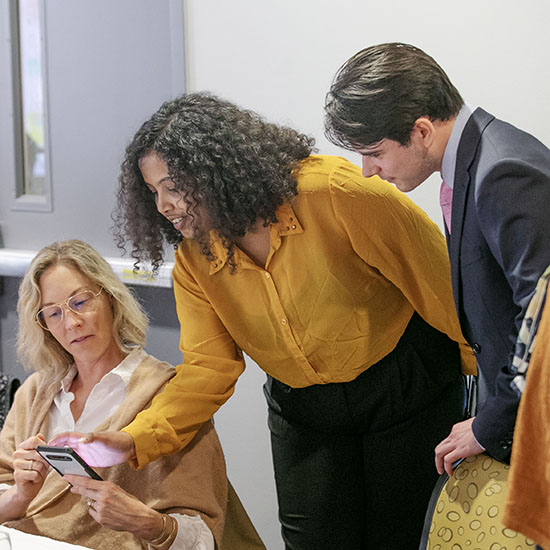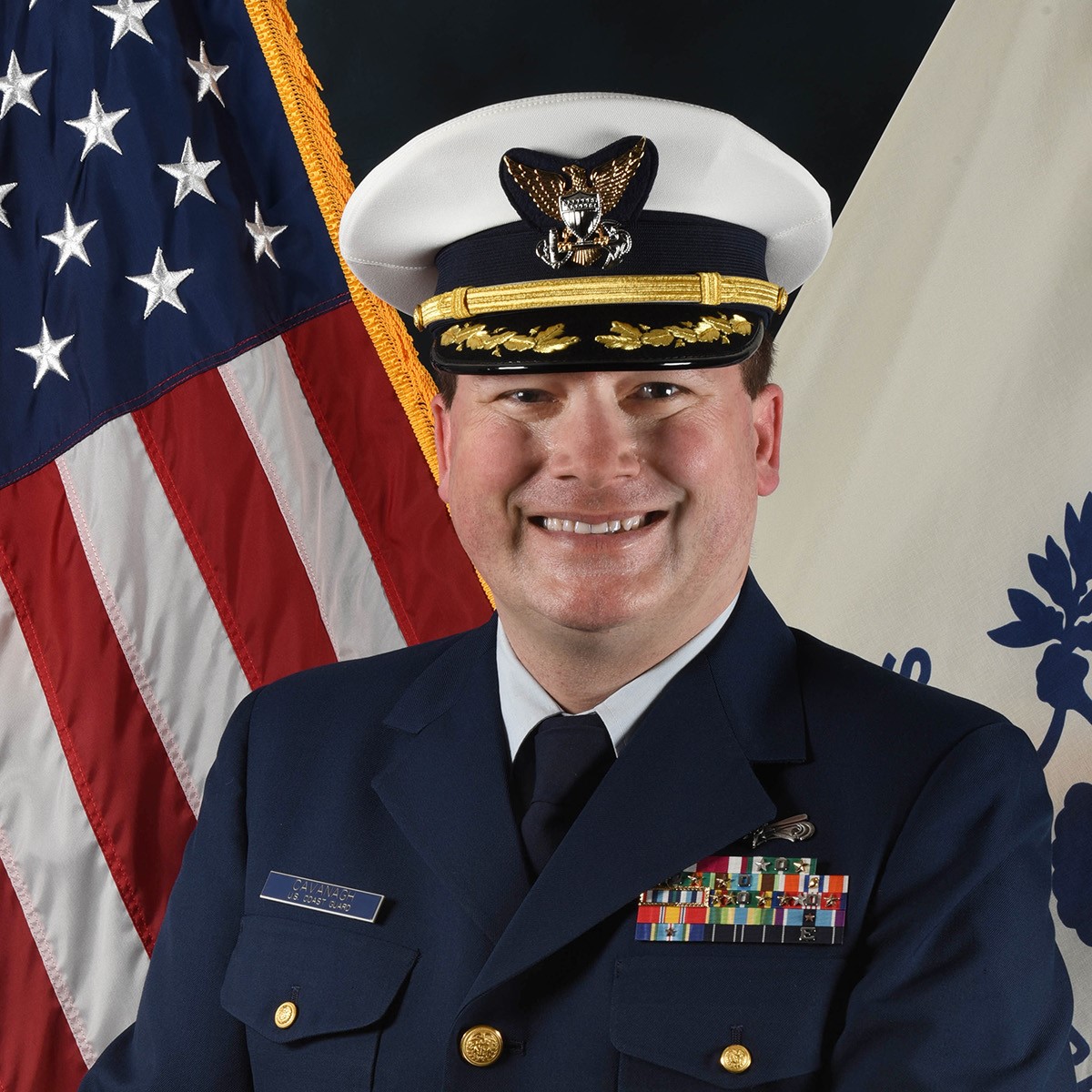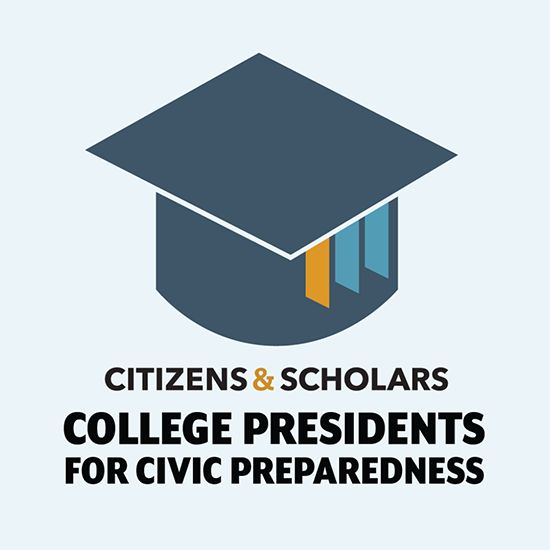East meets West: Skidmore language class hosts Japanese visitors
Eleven students from three schools in Saga, Japan, came to the Skidmore campus while on a two-week visit to Glens Falls, N.Y., Saga’s “sister city.” The longstanding sister-city arrangement between the two communities has led to several cultural exchanges with Skidmore over the years.
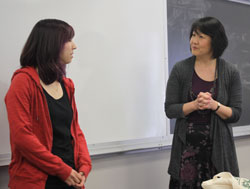
Alex Salerno ’16 (left) and Professor Masako
Inamoto (Photos by Thuy Duong Tran Thi ’18)
This spring, when Inamoto, an assistant professor in the Department of Foreign Languages and Literatures, received a call from John Arpey, a SUNY Adirondack professor who coordinates the exchange, asking if she would host a classroom visit, Inamoto immediately agreed. For her students, Inamoto said, “Communicating with native speakers in the language they have been studying and learning about are valuable experiences.”
To prepare, Inamoto used email to pair the Skidmore students with their visitors in advance. “I asked them to each introduce themselves via email in Japanese. They talked about themselves and their family members, and some shared information about their hobbies.” The emails created excitement about meeting their pen pals in person, she added.
While visiting Skidmore, the Japanese students were accompanied by Arpey and Jonathon Moxon, a native of the UK who now lives in Japan. Inamoto addressed the students in Japanese and Alex Salerno ’16, who works as a Japanese language assistant at the Foreign Language Resource Center, was on hand to translate and participate. The Skidmore students spoke in Japanese, introducing themselves, welcoming their guests, and sharing basic information. In response, each Japanese student spoke in English, sharing identifying information and a greeting.
Students were then encouraged to break into small groups and talk among themselves. Inamoto urged her students to chat. “This is a rare opportunity for you to talk to people from Japan,” she said encouragingly. After a few quiet minutes, the conversations started, with Japanese and English words—accompanied by many hand gestures—being seen and heard. Japanese students were asked what surprised them most about America and responded with its “big” size. The food was also surprising, one added, calling it a little “heavy.”
The Japanese students told their American counterparts that they have no homework in Japan—news that amazed the Skidmore students. They immediately asked Inamoto to “make our class more like Japan.”
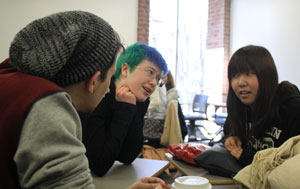
Skidmore students Spencer Greenberg and Magden Gipe chat
with visitor Shiho Soejima.
As the class neared its end, there were lively exchanges among the students about aspects of American and Japanese culture. Her students later shared a number of comments with Inamoto: “I felt prepared,” “I felt very good about my Japanese,” “Having an email exchange before the event made us more anxious to meet with them.” Although some of her students found the exercise intimidating, most were pleasantly surprised to see how well they understand and speak Japanese. Inamoto said, “They liked small group conversations better than a large group, as it ‘forced’ them to speak. They enjoyed that Japanese students were interested in American culture. They could see that the Japanese students enjoyed it when the American students expressed interest in Japanese culture.”
Arpey called the Skidmore visit “a great day for these kids, and a good experience for both sets of students.” Moxon said it was “a perfect exchange. It was very positive and open to allow both groups of students to learn about American and Japanese culture from each other.”
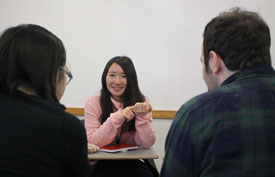
Skidmore students Jaclyn Kinney and Jacob Hudson
with guest Riko Tanaka.
The Skidmore visit was part of a very full agenda for the Japanese students, who visited a number of locations while here, including area churches; the Warren County Courthouse; museums, including the National Museum of Dance, where they had a lesson on hip hop; the Battenkill Dairy, and a maple sugar farm. The students stayed with host families in Glens Falls, which gave them a chance to strengthen their English language skills.
According to Inamoto, “This kind of activity makes us realize that both sides are making an effort for the same goal. My students are learning Japanese, and Japanese students are studying English to understand each other and each other’s culture better. The Japanese students were delighted to see my students speaking in Japanese. Learning a new language that is so different from English is not an easy thing to do for a native English speaker. My students spend a lot of time and effort to study Japanese and they get frustrated at times. But I do believe that this event has made them realize that they are better able to express themselves in Japanese than they thought. I hope they found it fun and empowering to speak Japanese in a real-life conversation.”
